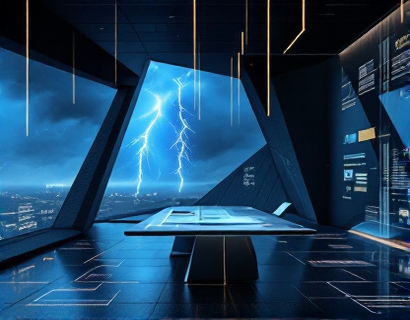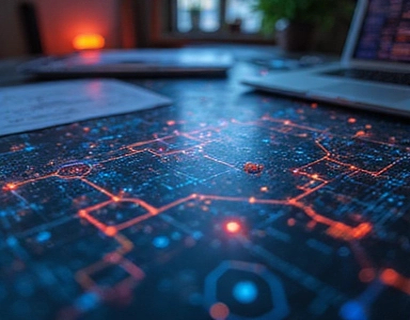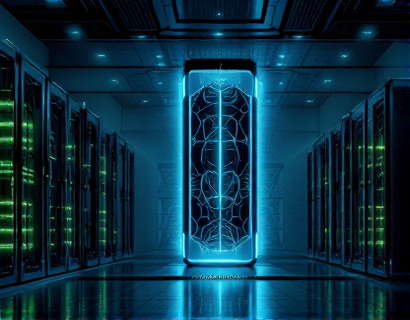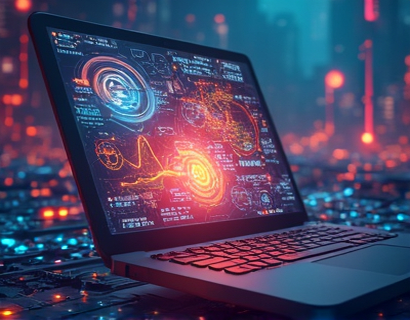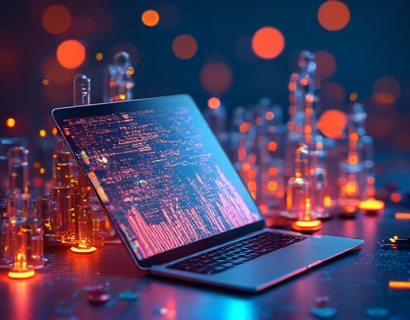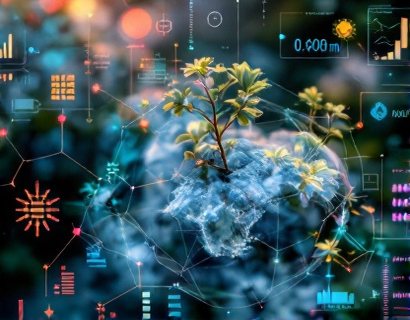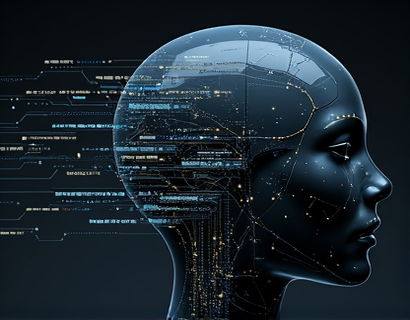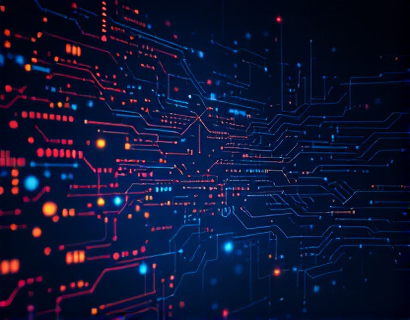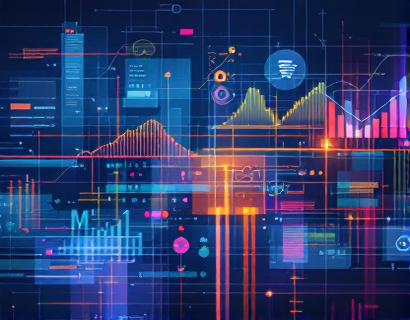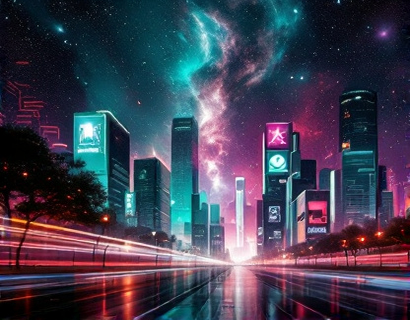Elevate Digital Ownership: Innovative NFT Solutions for Creators and Collectors in the Evolving Digital Landscape
The digital age has ushered in a new era of creativity and ownership, particularly with the advent of Non-Fungible Tokens (NFTs). These unique digital assets are redefining how creators and collectors interact, trade, and own digital content. This article delves into the innovative NFT solutions that are transforming the digital landscape, offering a comprehensive look at how these technologies are empowering users and fostering a dynamic community.
The Rise of NFTs and Digital Ownership
NFTs have emerged as a groundbreaking technology, providing a way to authenticate and verify the ownership of digital assets. Unlike traditional digital files which can be easily replicated, NFTs are unique and indivisible, ensuring that each token represents a singular piece of digital content. This innovation has opened up new avenues for creators to monetize their work and for collectors to own unique digital items.
The concept of digital ownership is evolving rapidly. In the past, digital content was often seen as intangible and lacking value. However, with NFTs, digital assets can now hold real value, much like physical art or collectibles. This shift is not just about ownership; it's about creating a new economy where digital creators can thrive and collectors can possess one-of-a-kind items.
Innovative NFT Platforms for Creators
For creators, NFT platforms offer a powerful toolset to craft, publish, and manage their digital assets. These platforms provide intuitive interfaces that simplify the process of minting NFTs, allowing artists, musicians, writers, and other creatives to easily upload and tokenize their work. The process is streamlined, making it accessible even to those with limited technical expertise.
One of the key features of these platforms is the ability to attach metadata to NFTs. Metadata can include information such as the creator's name, the title of the work, and a description, enhancing the context and value of the digital asset. This metadata is crucial for collectors who want to understand and appreciate the digital items they purchase.
Creating and Minting NFTs
The creation process begins with the artist preparing their digital asset, whether it's an image, video, audio file, or interactive experience. Once the asset is ready, the creator uploads it to the NFT platform. The platform then guides the creator through the minting process, which involves selecting a blockchain network, choosing a pricing model, and setting any additional features such as scarcity or exclusive access.
For instance, an artist might choose to mint a limited edition of their digital artwork, ensuring that only a certain number of NFTs are created. This scarcity adds value and desirability, much like limited edition prints in the traditional art world. The platform's user-friendly interface ensures that creators can focus on their art without getting bogged down by technical details.
Trading and Marketplaces for Collectors
For collectors, NFT marketplaces provide a vibrant ecosystem where they can discover, purchase, and trade unique digital assets. These marketplaces are designed to be user-friendly, with features such as search filters, price alerts, and buyer/seller ratings to enhance the trading experience.
One of the most significant advantages of NFT marketplaces is the transparency they offer. Blockchain technology ensures that all transactions are recorded on a public ledger, providing a clear and immutable record of ownership and transaction history. This transparency builds trust within the community, encouraging more participants to engage in the market.
Discovering Unique Digital Assets
Collectors can browse through a wide range of digital assets, from visual art and music to virtual real estate and gaming items. The platforms often categorize assets by type, creator, and popularity, making it easier for collectors to find what they are interested in. Additionally, many marketplaces feature curated collections and highlights, showcasing the most innovative and valuable NFTs.
Interactive features, such as virtual galleries and 3D previews, allow collectors to explore digital assets in a more immersive way. This enhances the overall experience and helps collectors make more informed decisions when purchasing. The ability to preview and interact with the asset before buying adds a layer of authenticity and engagement.
Fostering a Dynamic Community
The true power of NFT platforms lies in the communities they foster. These platforms are not just marketplaces; they are hubs where creators and collectors can connect, collaborate, and share their passion for digital ownership. The community aspect is crucial for the growth and sustainability of the NFT ecosystem.
Forums, chat rooms, and social features within the platforms enable users to engage in discussions, provide feedback, and build relationships. Creators can share their creative processes, seek advice, and gain insights from fellow artists. Collectors can join groups based on their interests, participate in auctions, and engage in peer-to-peer trading.
Events and Challenges
Many NFT platforms host virtual events and challenges to keep the community active and engaged. These events can range from art exhibitions and live auctions to creative challenges where participants are encouraged to produce new content based on specific themes. Such activities not only drive engagement but also help to discover new talent and trends within the community.
For example, a platform might organize a monthly art challenge where creators are tasked with producing a new piece within a set theme. The best submissions are featured on the platform, and the creators receive recognition and potential rewards. These events foster a sense of competition and collaboration, enriching the overall community experience.
Ensuring Security and Trust
Security and trust are paramount in the NFT space. Blockchain technology provides a robust foundation for secure transactions, but additional measures are often implemented to ensure a safe and reliable environment for users.
Wallets and exchanges on NFT platforms use advanced encryption and multi-factor authentication to protect user assets. Smart contracts, which automate the execution of transactions, are designed to be tamper-proof, ensuring that once a transaction is completed, it cannot be altered.
Moreover, many platforms offer customer support and educational resources to help users understand the security best practices. This includes guides on managing private keys, recognizing phishing attempts, and securing their digital assets. By prioritizing security, these platforms build trust and encourage more users to participate in the NFT ecosystem.
The Future of Digital Ownership
The integration of NFTs into the digital landscape is just the beginning. As technology continues to evolve, we can expect even more innovative solutions and applications for digital ownership. The potential for NFTs extends beyond art and collectibles to areas such as virtual real estate, gaming, and even identity verification.
For creators, the future looks promising as NFTs provide new revenue streams and ways to connect with their audience. The ability to monetize digital content directly, without intermediaries, empowers creators to maintain control over their work and build sustainable careers.
For collectors, the opportunity to own unique digital assets that hold real value is a game-changer. The combination of scarcity, authenticity, and community engagement makes NFTs an exciting and worthwhile pursuit. As the ecosystem grows, collectors can expect a wider variety of assets and more sophisticated tools for managing and enjoying their collections.
Conclusion
The advent of NFTs is revolutionizing the way we think about digital ownership and creativity. Innovative NFT platforms are providing creators and collectors with powerful tools to craft, trade, and manage unique digital assets, while fostering a dynamic and engaged community. As the digital landscape continues to evolve, these solutions will play a crucial role in shaping the future of digital ownership and scarcity.




